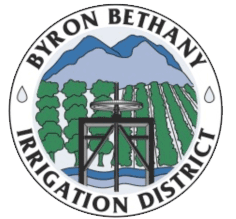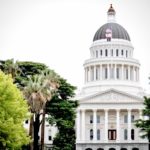Byron, CA (March 23, 2017) – Farmers left waiting in limbo to learn how much water they would receive from the Central Valley Project (CVP) finally have their answer – and it is stunningly disappointing.
On Wednesday, after weeks of inexplicable delays that hamstrung farmers at the outset of the growing season, the U.S. Bureau of Reclamation finally announced a mere 65% allocation for South-of-Delta CVP contractors, including Byron-Bethany Irrigation District (BBID). The CVP, one of the state’s largest infrastructure projects, is managed by the federal government and delivers water to the Central Valley.
“If there was ever a year for a full, 100% allocation, this is it,” said BBID GM Rick Gilmore. “This is the wettest year ever in California. The state has double the water it normally has this time of year. Our reservoirs are literally overflowing. Our snowpack is at more than 150% of normal. This delayed decision extends our regulatory drought and shows how badly broken California’s water system is.”
Instead of utilizing what should be abundant water supplies to grow farm-fresh fruits and vegetables to feed California and the nation, growers in BBID’s CVP service area will yet again face shortages. The lack of a timely decision was damaging enough. Without knowing how much water is available, farmers can’t make critical decisions about how many acres to plant, or how many people to hire. The 65% allocation adds insult to injury, and may reduce how much local produce is available for California’s families.
Meanwhile, water that could be used in cities and on farms, or to recharge the state’s taxed groundwater flows into the ocean, in the name of failed environmental policies. Federal fisheries are hoarding water to keep river temperatures at arbitrary levels to protect fish – with no concrete improvements. These policies aren’t good for California’s communities, its farms or even its environment.
“The District is more committed than ever to doing whatever necessary to fix the system,” Gilmore added. “We must finally build new infrastructure to store more water in wet years. We must pursue constructive regulatory solutions to properly divvy water between the state’s cities, its agriculture community and the environment. That’s the best – and only – way to insulate against future droughts and secure long-term water reliability for not only our growers, but the entire state.”

